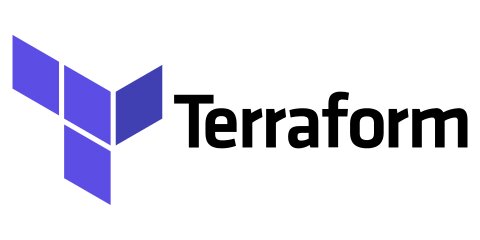Maximizing Infrastructure Management Efficiency: Unveiling Terraform's Best Practices
Introduction
Terraform is an open-source infrastructure as code (IaC) technology provided by HashiCorp. With the use of a declarative configuration language, users may create and provide infrastructure. This implies that Terraform will take care of the construction, modification, and deletion of the resources required to reach the desired state based on a file description of the infrastructure you want.
We'll go through this article on the advantages of Terraform, exploring its key concepts best practices, and recommendations for effective development with Terraform.

Advantages of Terraform
For infrastructure provisioning and management, Terraform is a popular option because of its various advantages. There are a lot of advantages to using Terraform, like:
- Infrastructure as Code (IaC): Version control over your infrastructure configurations is possible with Terraform as it enables you to specify your infrastructure as code. Improved cooperation, versioning, and the capacity to monitor changes over time result from this.
- Multi-environment: Terraform is cloud-agnostic which means it supports multiple platforms with hundreds of cloud providers like AWS, GCP, DigitalOcean, Azure, etc, and even on-premises environments.
- Simplicity: A simple configuration language, characterized by its simplicity and quick learning curve. Additionally, its extensive community offers substantial support.
- Declaratively: To specify the ideal state of your infrastructure, Terraform uses a declarative language. As a result, reading, writing, and comprehending the configuration files are made simpler.
- Scalability: Terraform may be used for infrastructure deployments of any size. You can effectively manage complicated setups with hundreds of resources because of its scalability.
- State Management: Your infrastructure's current status is tracked via a state file that Terraform maintains. This state file ensures that Terraform may make updates without unexpectedly impacting other users by helping it comprehend the current infrastructure and plan changes accordingly.
- Integration: It is easy to integrate with configuration management tools like Ansible.
I won't go into too much detail about the benefits because the focus of this blog is on "Best practices of Terraform," not "Advantages Terraform?"
Terraform Best Practices
1. Remote State: When testing, it's acceptable to use the local state; however, for anything beyond that, use a remote shared state location. When working in a team, one of the first best practices you should implement is having a single remote backend for your state. Storing your state file remotely allows multiple team members to work on the same infrastructure, track changes, and collaborate more effectively.
Ensure that in the event of a disaster, you have backup copies of your state.
For some backends*, like AWS S3, you can enable versioning to allow for quick and easy state recovery.
terraform { backend "s3" { bucket = "mybucket" key = "path/to/my/key" region = "us-east-1" encrypt = true dynamodb_table = "terraform-lock" }}
2. Version Control: You can keep track of modifications to your configuration files over time by using a version control system such as Git. It also allows team collaboration and the ability to roll back changes as needed.

3. Variables: You can reuse code in many situations while maintaining its uniqueness by using variables. Furthermore, it streamlines and increases the manageability of the configuration.
One of the most used ways is String. Strings mark a single value per structure and are commonly used to simplify and make complicated values more user-friendly. Below is an example of a string variable definition.variable "aws_region" { type = string default = "us-east-1"}
A string variable can then be used in resource plans.
region = var.aws_region
4. Validate and Format: Remember to run terraform fmt and terraform validate to properly format your code and catch any issues that you missed.run:
terraform validate -no-colorrun: terraform fmt
5. Secrets Management Strategy: Use Terraform's sensitive input variables for handling sensitive information such as API keys or passwords.
One technique that you can use is to pass secrets by setting environment variables with TF_VAR and marking your sensitive variables with sensitive = true.
variable "db_password" { type = string sensitive = true}
6. Import existing infrastructure: The "terraform import" command can be used to integrate existing infrastructure that was not built with Terraform into your Terraform configuration. You can import pre-existing resources into your Terraform state by using this command.
7. Modularize Your Configuration: Breaking down your configuration into smaller, reusable modules can make it easier to manage, test, and debug. It also helps you avoid repeating code across different environments.
Module Directory Structure
root/|-- main.tf|-- variables.tf|-- outputs.tf|-- modules/| |-- example/| |-- main.tf| |-- variables.tf| |-- outputs.tf
8. Use loops and conditionals: Terraform comes with support for conditionals and loops, which lets you manage setups, add logic to your infrastructure code, and build resources on the fly. Whenever possible, your code should be able to create numerous instances of a resource.
9. Workspaces for Environments: With Terraform Workspaces, you can manage several environments or configurations from within a single Terraform configuration directory. Using workspaces, you may establish distinct instances of your infrastructure with unique parameters, configurations, and conditions.
terraform workspace Subcommands: delete Delete a workspace list List Workspaces new Create a new workspace select Select a workspace show Show the name of the current workspace
Terraform's merits are mostly found in its ability to manage infrastructure consistently and effectively across different cloud and on-premises environments, as well as its flexibility, scalability, and modularity.
Conclusion
Terraform can streamline and improve the effectiveness of your infrastructure management. You can get the most out of Terraform and simplify your infrastructure management by using these best practices.
Reference
- Terraform Best Practices to Improve your TF workflow
- Terraform — Best Practices
- Best practices to follow while using Terraform
- Terraform tips & tricks: loops, if-statements, and gotchas
About the Author
Mohammed Hassan - Cloud Consultant at Cloud Softway
